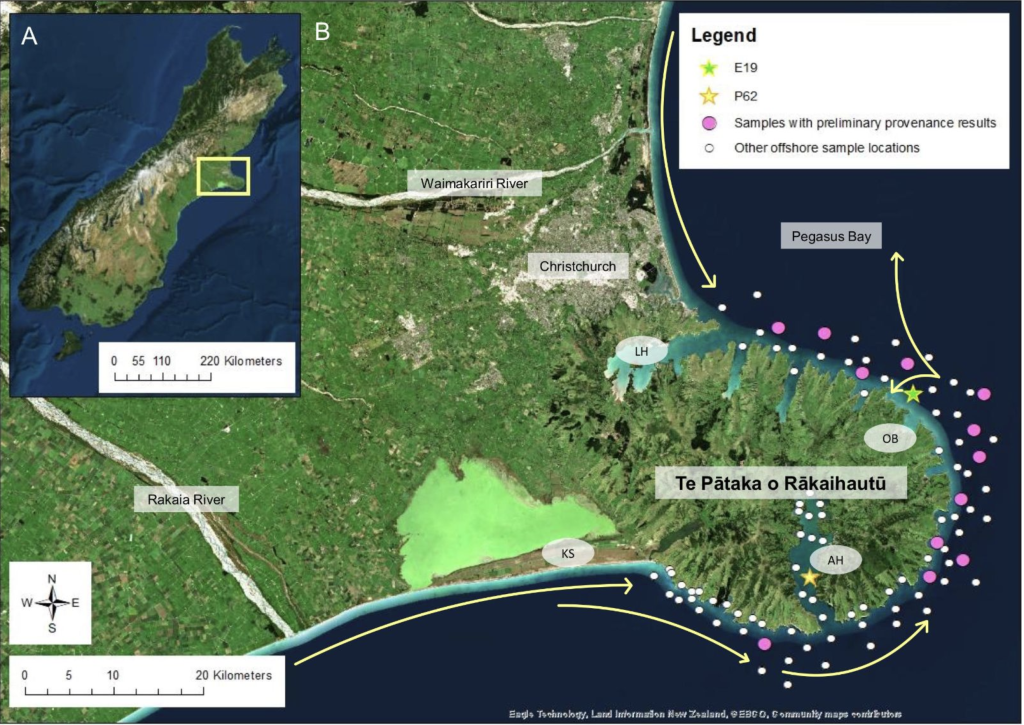
Sediment Provenance of Te Pātaka o Rākaihautū (Banks Peninsula)
1/2023-5/2023
During my study abroad program with Frontiers Abroad Geology of New Zealand, I conducted a group research project where we connected with local communities to research something that was important to them. We wrote a report and presented a poster at the Geological Society of America Connects Fall 2023 meeting. You can read the abstract here:
Sediment provenance studies use characteristic geochemical signals to interpret the origin and transport of sediment. Provenance research can clarify sediment dynamics in areas such as Te Pataka o Rakaihautū (Banks Peninsula), New Zealand, where increased sedimentation could impact marine habitats. A common way to infer provenance is by comparing the concentration of major and trace elements, analysed using portable x-ray fluorescence (pXRF), in sediment samples to that of potential sources. Before undergoing pXRF analysis, samples are sometimes treated to remove carbonate or organic material, which may reflect the marine setting, not the original source. Currently, there is no standardised procedure for how to treat marine surface sediments for pXRF analysis. Here we show that common treatments (HCl, H2O2, and Loss on Ignition) affect unintended elements, thus biassing results. We found that drying the sample in a 60 ℃ oven for ~12 hours and then handpicking carbonates >2 mm in size produced the most stable results. Following this procedure, we prepared a preliminary set of marine surface sediment samples, on which we performed pXRF analysis. From the results of this analysis, we determined that grain size analysis and further constraint of potential source areas are needed to understand the provenance and dynamics of sediment surrounding Te Pataka o Rakaihautū.